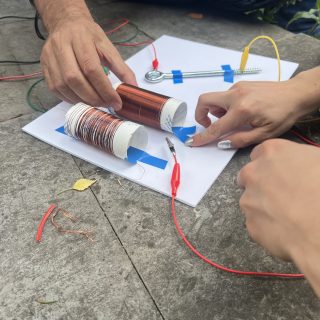Source: recom.link
By Dragan Markovina
Although the periods when one could nurture rational optimism with respect to facing the past honestly, or in terms of expectations of comprehensive societal progress, have been few and far between in the Yugoslav region over the past 25 years, few would have expected a complete return to the paradigm of the ‘nineties. Wrapped in a softer rhetorical plastic, the same political messages which de facto led to the complete destruction of each of the societies in question are now to be found again. It is precisely in this type of atmosphere, which has been prevalent over the past few years, that a couple of paradigmatic moments occurred in 2016 – attesting, in every sense of the word, to the fact that we live in a time of counter-revolution, to paraphrase the words of Eric Hobsbawm. In Croatia, a group of aggressive clero-nationalists and overt sympathizers of the NDH has come to power, along with their project for the creation of a so-called new national paradigm. In plain English, this means that the right to public action will be reserved exclusively for those insisting on nationalist mythomania and mythical concepts of otherness, while everyone else is to be censored, pushed to the margins, disempowered and deprived of the opportunity to establish any sort of dialogue. This is best attested by the fact that although more than five thousand of the region’s most eminent cultural workers and intellectuals have signed a petition against the appointment of a man with clear revisionist views as Minister of Culture, this has prompted no significant reaction from those in power. At the ideological level, this kind of politics has led to a complete clericalization of the public media, but also to a discreet attempt to fuse together the Catholic University and the University of Philosophy in Zagreb, which would enable the Catholic Church and its dogmas to sovereignly invade the space intended to encourage critical thought. And, in order to finally complete these processes, including avoiding any questions about Tudjman’s legacy and reserving a mythical place in history for Croatia’s independence and the Homeland War, those in power have set out to revise the entire history of World War II. Because of all this, newspapers such as Vjenac matice Hrvatskeand Glas Koncila (but also the more mainstream media such as Večernji list) have, for years now, been making claims that there was no death camp in Jasenovac, that the majority of people died there after the war, and that it was actually the Partisans and the anti-fascists who were the real criminals. In its ever more frequent claim that there had been two totalitarian systems, rather than just one, this paradigm, which happens to have significant logistical support across Europe, completely overlooks the authenticity of the whole Yugoslav situation and the history of the Partisan resistance in the region. And there is no doubt whatsoever that all of that is being done in order to completely de-construct the most precious legacy of this resistance – the mutual trust and respect between the Yugoslav peoples, in this particular case, the Croats and the Serbs. It is just as clear that we are witnessing the same process taking place in Serbia, with the same underlying motives, where even professional historians and high-ranking officials of the Serbian Socialist Party are attempting to equate the Partisan and Četnik movements, both in the civilizational sense and in terms of their place in our system of values. If we now go back to some other recent paradigmatic events (apart from the prevalent denial of the reality of Jasenovac in Croatia, being conducted, for instance, by equating the forgeries by Jakov Sedlar with the serious investigative work of Slavko Goldstein), including the very noticeable estradization of the NDH, which is slowly becoming an ever more pervasive cultural fact, we will not be able to avoid the recurrence of savage acts such as those recently seen in Mostar, or the whole controversy surrounding the Hague’s rulings in the Karadžić and Šešelj cases. Mostar, of course, still remains a dark stain on Tudjman’s politics, although the issue was formally and very elegantly avoided altogether by means of the adoption of a Parliamentary declaration negating Croatia’s participation in the war in Bosnia and Herzegovina, while the actual situation on the ground in Mostar is even worse. Even before the most recent street activities of the far right, when a huge Croatian chequer was drawn on the ridge of Mount Planinica overlooking the city, or when, in the middle of the night, a memorial stone commemorating the suffering of 1993 was upturned and thrown into the River Neretva, no one, not even the most naive of us, had any illusions that a social catharsis had taken place. Moreover, rather than face the fact that the eastern part of Mostar has been turned into a wartime ghetto and own up to destroying the main symbol of the city (a monument under UNESCO’s protection at the time), the Croatian nationalist politics not only refuses to do this, but actually keeps perpetrating the crime over and over again, as demonstrated by the recent memorial stone example. With all this in mind, we really should not be surprised that no one at the Art Department of Mostar’s University of Philosophy has any interest in its perfect view of the devastated Partisan graveyard located no more than 300 feet away, or even cares about the state this unique cultural monument is currently in. The naming of a student dormitory in Pale after the war criminal Radovan Karadžić is part of the same frame of mind – it stands as a unique example in the contemporary world of having a building named after a person who is still alive, has had nothing to do with the building itself, and is a convicted war criminal on top of it. There can be no doubt that such an act represents a very clear message that there is going to be no facing of the past and that any attempt to do so will not be tolerated, one which re-offends everyone who suffered the consequences of Karadžić’s politics. The nostalgic-like ruling in the Šešelj case falls under the same category, as it has practically rehabilitated the staunch wartime propagandist, conferring upon him the aura of innocence. If we were to look at these societies from a distance, we would realize that in each of them, the same processes of maintaining wartime ideologies and rehabilitating the collaborationist forces from WWII are taking place, accompanied by a complete lack of awareness by the political, academic and intellectual elites of their moral responsibility for the miserable state their respective societies find themselves in. Bearing all of that in mind, it would be virtually impossible to expect a serious process of social catharsis to take place, or one of facing the past and the crimes perpetrated in the name of our own nation. This problem is particularly pronounced in the ever more prevalent collaboration between Serbian and Croatian revisionist historiographers, who, unwittingly, only confirm what they are trying to deny – namely, that the nationalists of the region have always understood each other best, have always fed on one another, and have, hand in hand, fueled the chaos we now have to face.
Author, PhD, a historian, has published four books: ‘Between red and black’ (2014) i ‘History of the defeated’ (Jesenski i Turk, 2015), ’Yugoslavism after everything’ Mostart i ‘Mostar-The silence of the defeated city’ (Centar za kritičko mišljenje Mostar, 2015)



